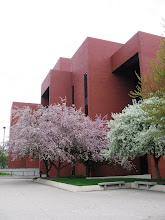How a Digital Collection Grows: Mass Digitization Creates Digitization Mass

From a modest beginning of 2,000 photographic images from the University Libraries’ Archives and Special Collections in 2002, the number of digital objects created and offered by the Libraries for learning, teaching, and research has grown to over 104,000.
By most standards, that is an impressive growth in just a few years time. We’ve created a bountiful digital garden.
But as the garden of digital resources expands daily, the demand to increase digital output becomes more prominent. While 104,000 items seems like a large number, it is only a fraction of the potential resources that could be digitized from Archives and Special Collections alone, and the fraction is even smaller when library-wide, campus-wide, and community-wide materials are added to the equation.
Increasing the digitization of analog materials creates opportunities and challenges for libraries, archives, museums, historical societies, and other cultural and educational organizations. Changes in financial resource allocations, job responsibilities, and even physical space often become necessary as institutions address these opportunities and challenges. Our gardens change with the seasons. If our visitors expect more digitization efforts to make more resources available from our collections, then what is the best way to meet those expectations?
At a recent professional conference of archivists, one approach addressed by the keynote speaker and other program participants was mass digitization. The concept of mass digitization is as it sounds: a program that digitizes in mass. This approach is a familiar processing technique that archivists have employed for years to handle massive volumes (and backlogs) of paper that need to be organized, described, and made available for research. It is a way to deal with large volumes of materials in a timely manner with minimum descriptive information.
The advantage of mass digitization, like mass archival processing, is that it makes the materials available more rapidly. The problem, if you ask any librarian, is the lack of descriptive information. In the case of digital objects, this means less metadata. In turn, less metadata means that some objects may not turn up in your searches.
The proponents of mass digitization projects argue that it is better to have the digital object on the Web where it is accessible globally today than to wait for one or more months to have it searchable through more robust metadata. That is the same argument that many archivists have used for mass processing. As the call goes out for more digital resources, the mass digitization approach gains appeal to some.
The first 2,000 photographs made available by Ball State University Libraries are an example of the mass digitization approach. We had very little metadata because we did not have a librarian to prepare it, and what we had followed very few standards. Since then, the collection has been redone with appropriate and accurate metadata and even rescanned to follow better standards.
Have these improvements increased the usability of the objects or the satisfaction of the users? While the use has not increased in percentage significantly, the satisfaction of the users has improved.
While mass digitization may be an answer worth exploring in some cases, it does not mean that quality and standards should suffer.
The University Libraries will continue to increase their production of digital resources to meet the growing demands of students and faculty while continuing to ensure a high quality product for “mass satisfaction.” Visit our digital collections at http://libx.bsu.edu.
Labels: Ball State Libraries, digital collection


0 Comments:
Post a Comment
<< Home